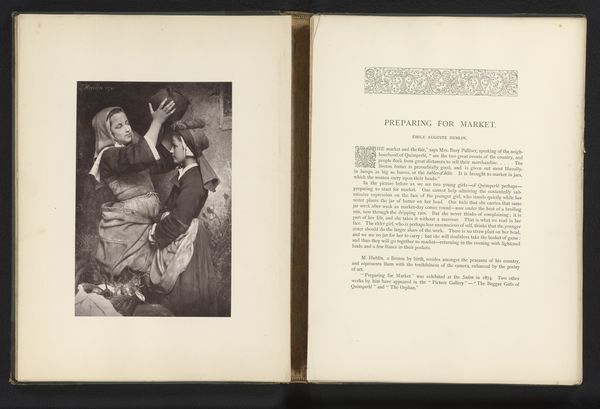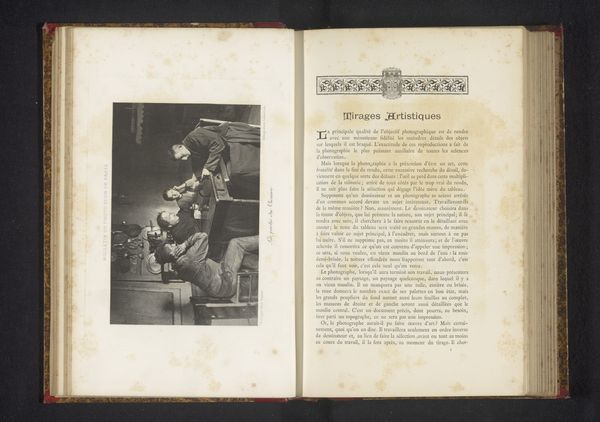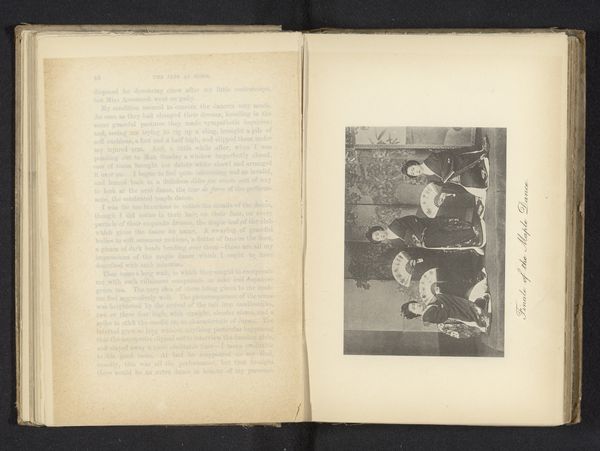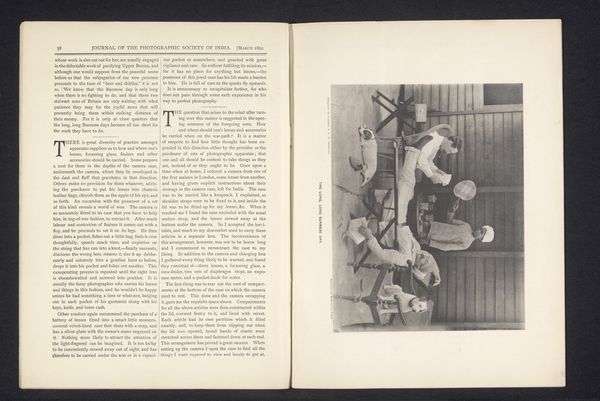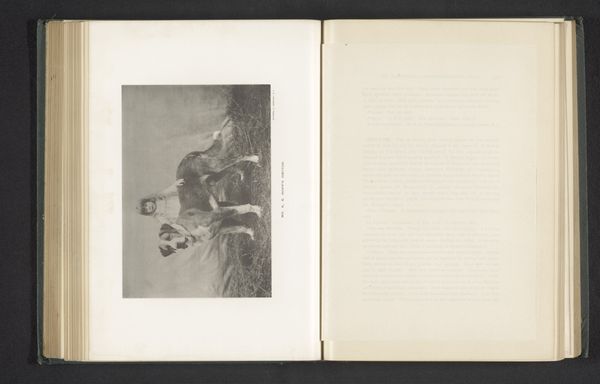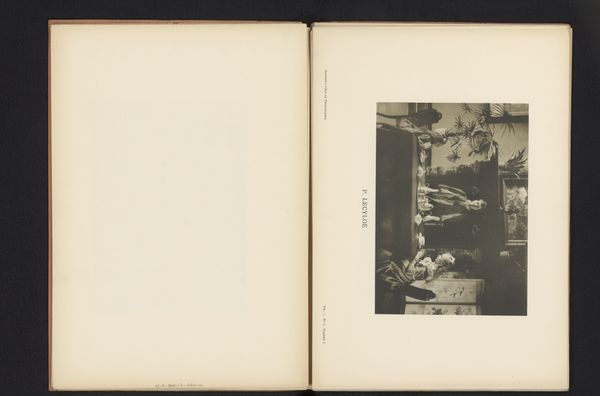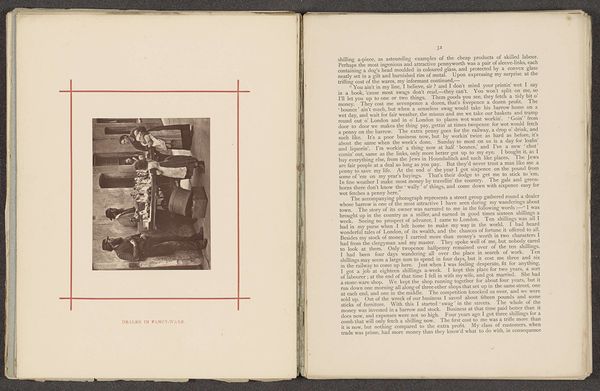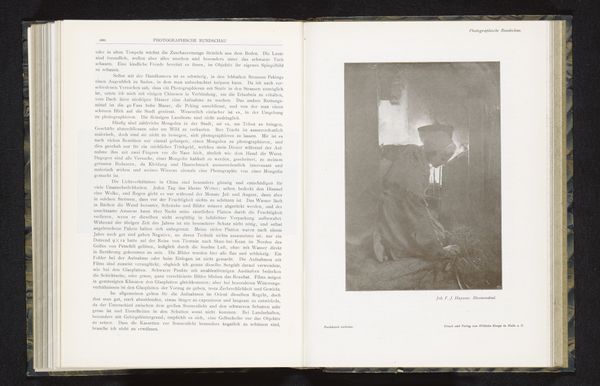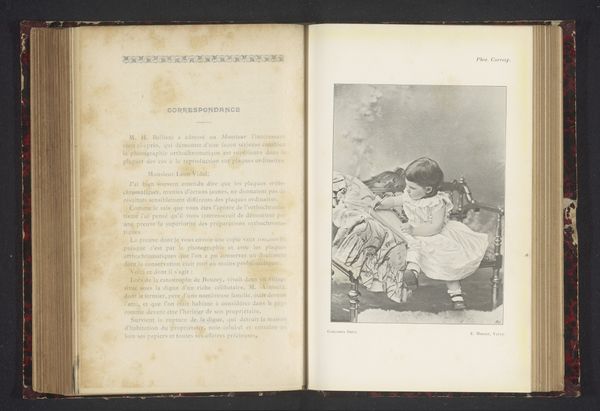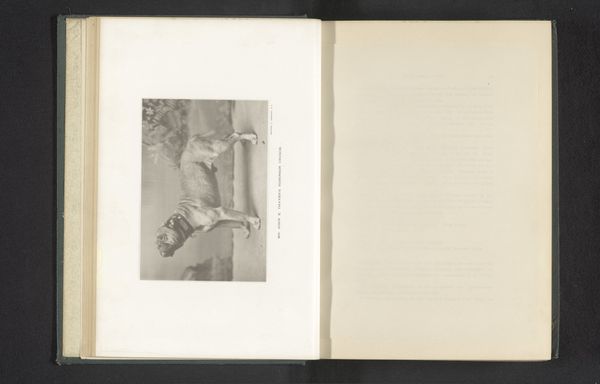
print, photography, gelatin-silver-print
#
portrait
# print
#
photography
#
gelatin-silver-print
#
realism
Dimensions: height 125 mm, width 169 mm
Copyright: Rijks Museum: Open Domain
Curator: Welcome to this presentation of "Portret van een onbekende vrouw die wol spint op een spinnewiel," or "Portrait of an Unknown Woman Spinning Wool on a Spinning Wheel" in English. This gelatin silver print predates 1893 and captures a moment of quiet industry. What strikes you upon seeing it? Editor: The tonal range of greys initially casts quite a subdued mood. But the scene quickly becomes engaging through the careful arrangements of textures, circular patterns, and light; yet, I am curious about this anonymous subject. Curator: Indeed, let us appreciate how the artist uses chiaroscuro to define form. The woman, although anonymous, is realistically rendered, her figure carefully lit against a muted background. Note how the crisp textures of the textile, and her clothes contrast to produce visual interest and variety. Editor: Yes, technically it demonstrates remarkable realism, and as such raises questions for me: What specific class did this anonymous spinner occupy? Her dress and simple adornments like her neck kerchief and coiffed hairstyle, despite what I am willing to describe as a studio setting, suggest neither privilege nor outright destitution. It inspires thoughts about 19th-century women and how their daily domestic roles impacted both the socioeconomic and gender landscapes. Curator: Intriguing. The spiral wheel commands our attention as a technical marvel central to her activity; her intent gaze towards this instrument mirrors the dedication with which she occupies her task. It showcases efficiency and simplicity: A singular pursuit encapsulated within the photograph's framework. The piece uses horizontal balance to showcase form. Editor: Considering Arthur Burchett's history with progressive causes in late 19th century artistic circles, the positioning of this unknown subject suggests an intent to challenge certain gendered divisions. The wheel here is both subject and the device or mechanism of suppression. Curator: Whether Burchett intended commentary on the suppression of women's contribution to the Victorian economic climate or instead simply wished to explore representational depth via form is not clear here. That ambiguity perhaps adds the enduring tension contained within this photographic portrait. Editor: I would tend to read it that way: either way this portrait leaves me appreciating the dialogue between context, craft, and cultural coding found embedded deep within. Curator: And that blend indeed continues to bring this image of quiet labour vibrantly to life before our eyes, even today.
Comments
No comments
Be the first to comment and join the conversation on the ultimate creative platform.
